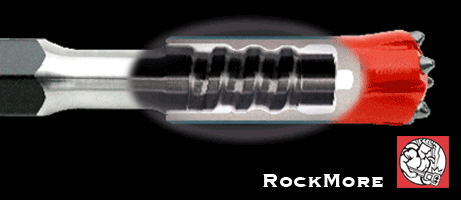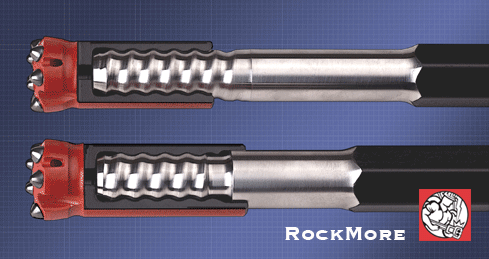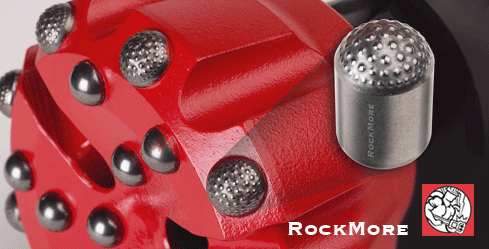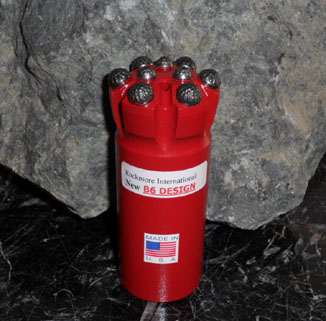
New DTH Carbide Design Accelerates Penetration, Increases Bit Life
November 1, 2003
Rockmore Offers New Marathon Carbide
January 1, 2005New XT33 Thread Design for Drifting & Tunneling Operations

Rockmore International introduces a new thread concept to improve drilling efficiencies in drifting and tunneling operations. The innovative thread connection, designated as XT33, is designed for the rod / bit joint of tunneling rods and is intended to extend thread life, increase hole straightness, and improve the bit coupling / uncoupling function. The XT33 thread accommodates standard 45mm (1 ¾”) diameter tunneling bits common to drifting and tunneling operations world-wide.
The new thread design is stronger and more robust than the industry standard “Rope” (R32) style thread because it is similar to a Trapezoidal “T” type design. This configuration offers a greater available thread volume index allowing for increased wear capacity. And with a larger diameter at 33mm, the XT33 provides for increased overall thread life for both bit and drill rod. Due to the new thread profile and increased diameter, rod and bit rigidity have been improved leading to higher precision collaring and straighter holes. The new thread promotes more effective energy transfer that results in higher bit penetration rates.
The XT33 incorporates the novel Tri-Pitch thread concept developed by Rockmore. With its innovative short length, the Tri-Pitch thread interface creates a sturdy rod / bit connection that facilitates easier and faster bit coupling and uncoupling. The new design was developed in the lab and tested in the field to optimize energy transfer at the contact interface points between rod and bit.
A long thread pilot at the front of the rod thread section is incorporated in the XT33 intended to assist the bit coupling procedure, as well as strengthen and stabilize the bit connection. And an innovative rod / bit cylindrical contact zone is present at the end of the rod thread designed to provide support, rigidity, and resistance to rod bending, especially at the bit end of the rod. This contact area is designed to reduce rod deflection during collaring and drilling by increasing resistance to bending forces focused at the tight interface in this cylindrical zone. The reduced rod deflection results in higher precision collaring and ultimately to straighter holes.



